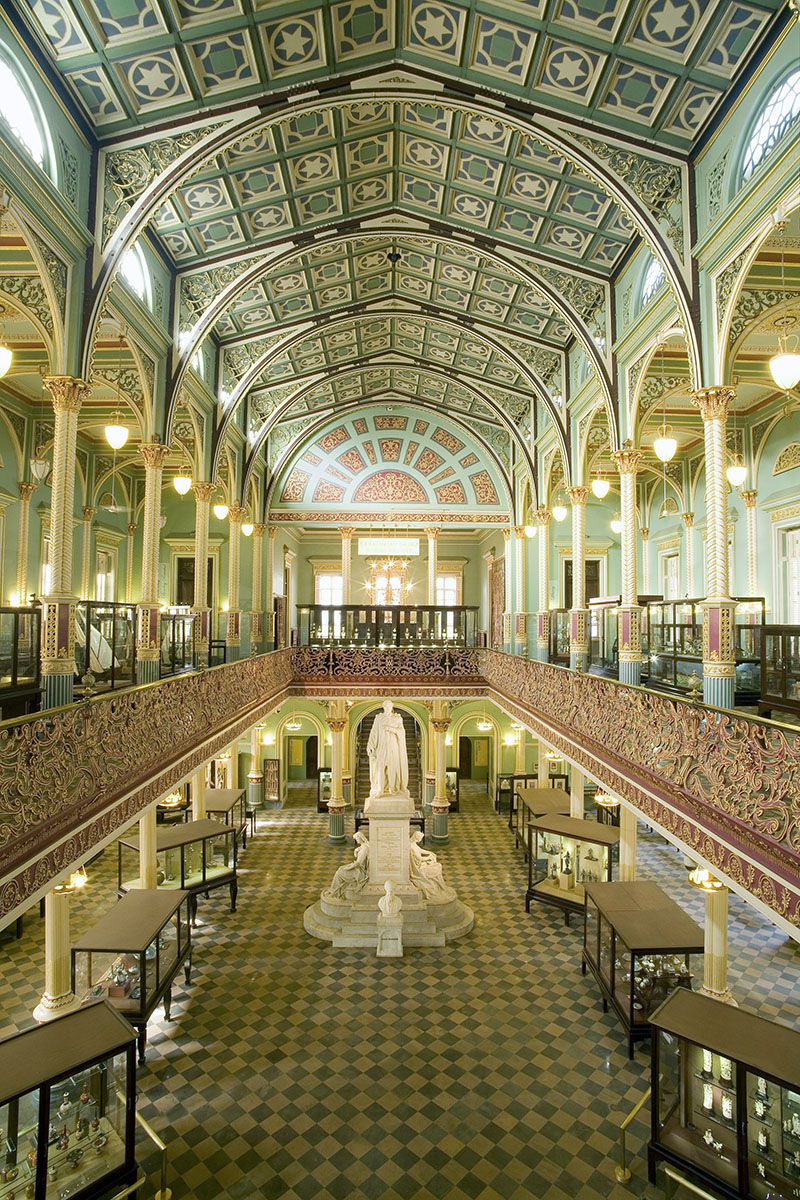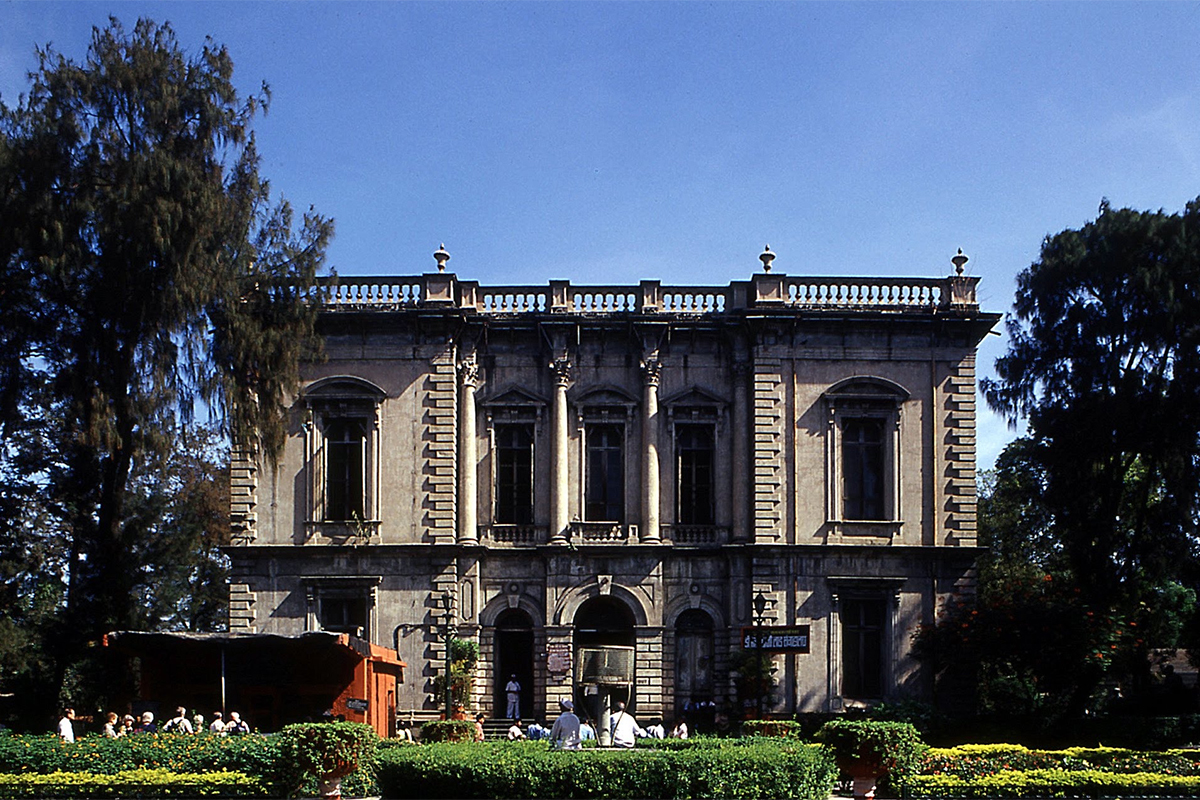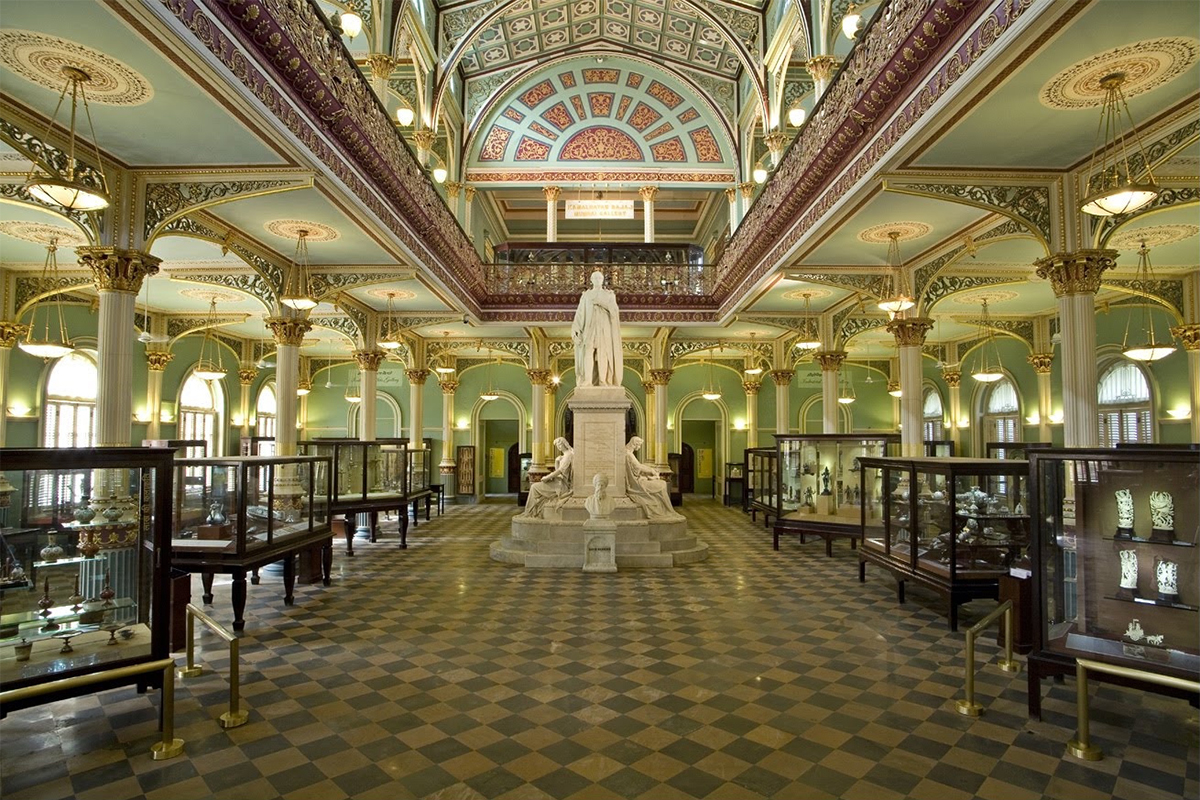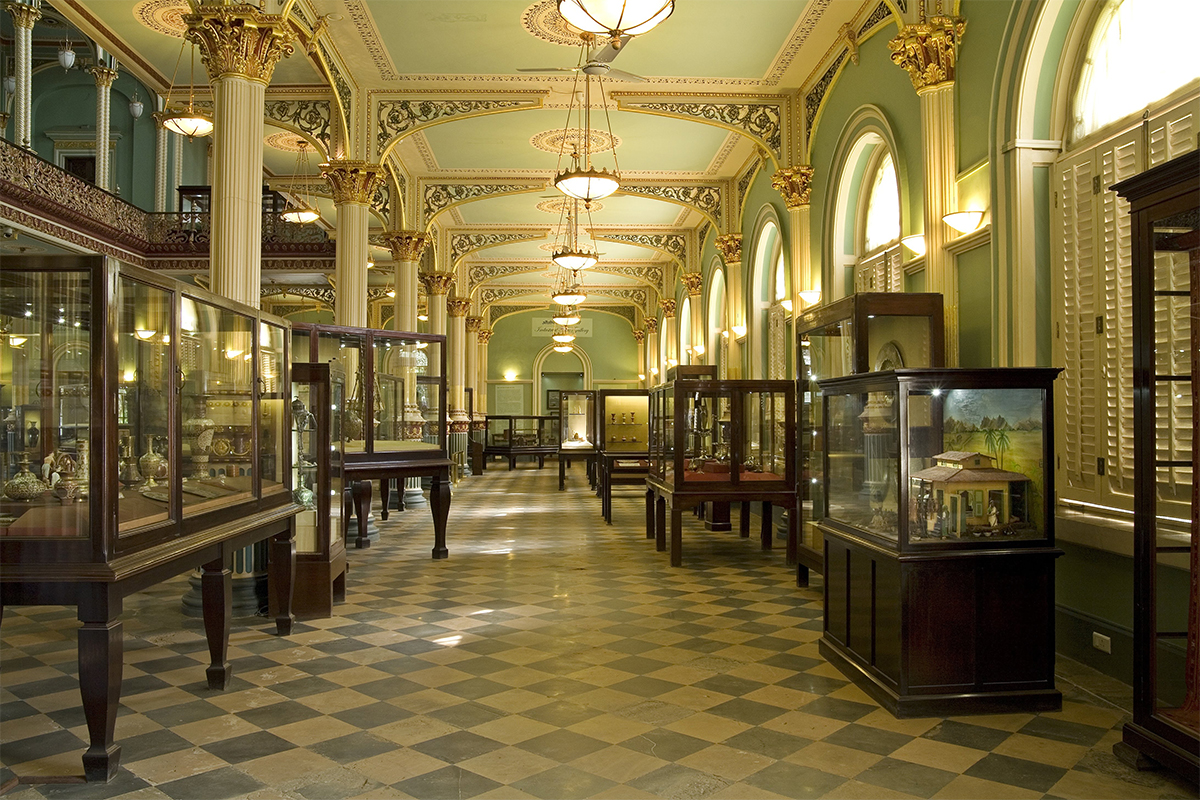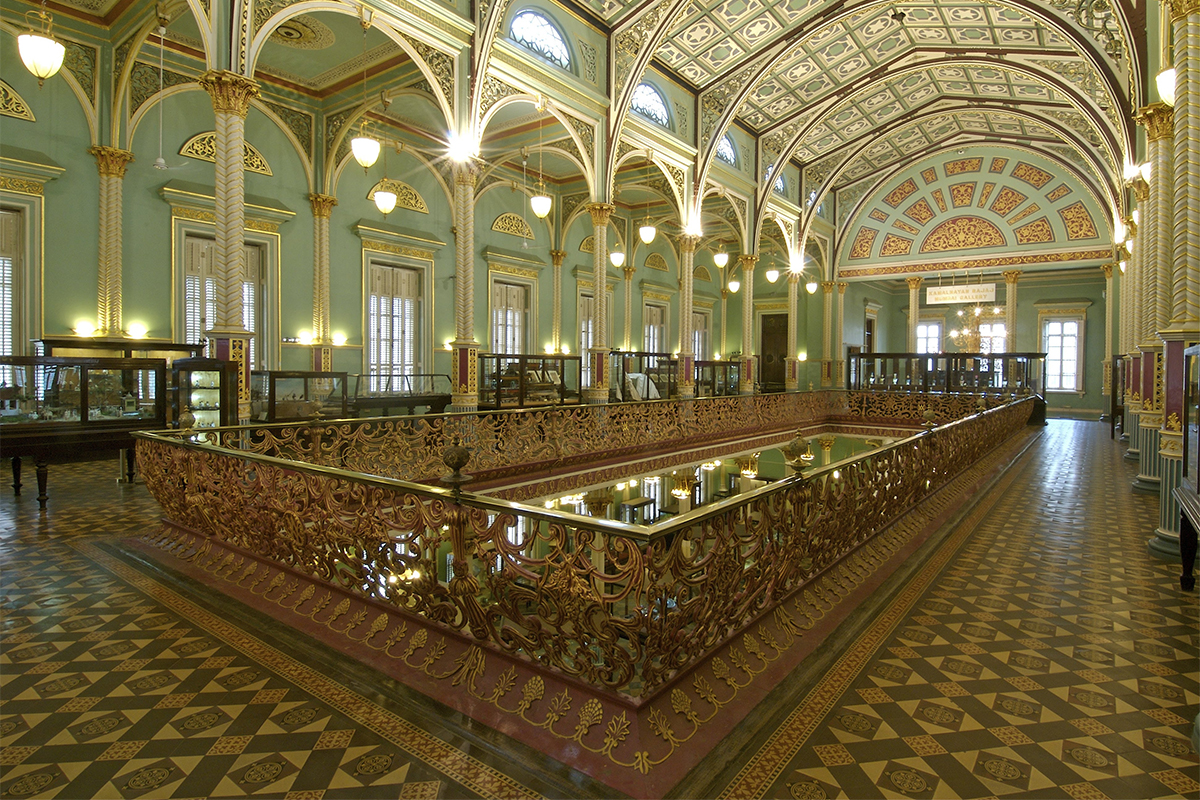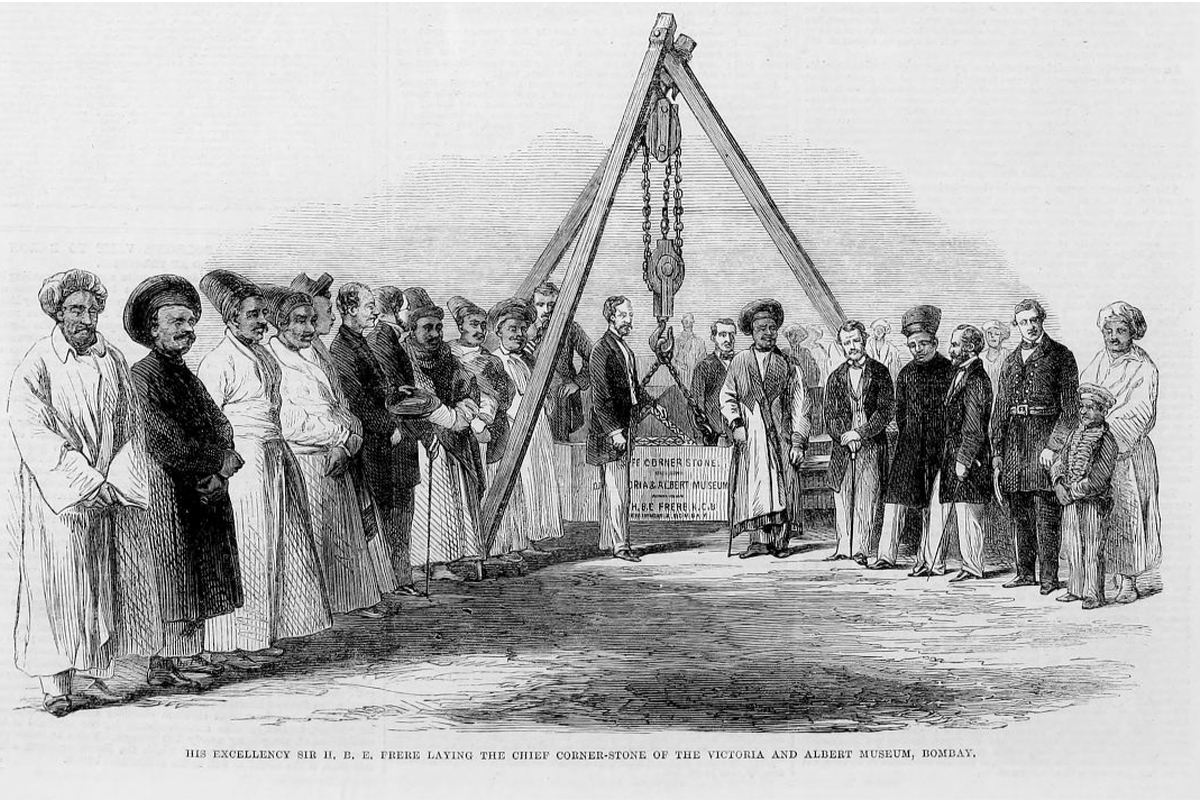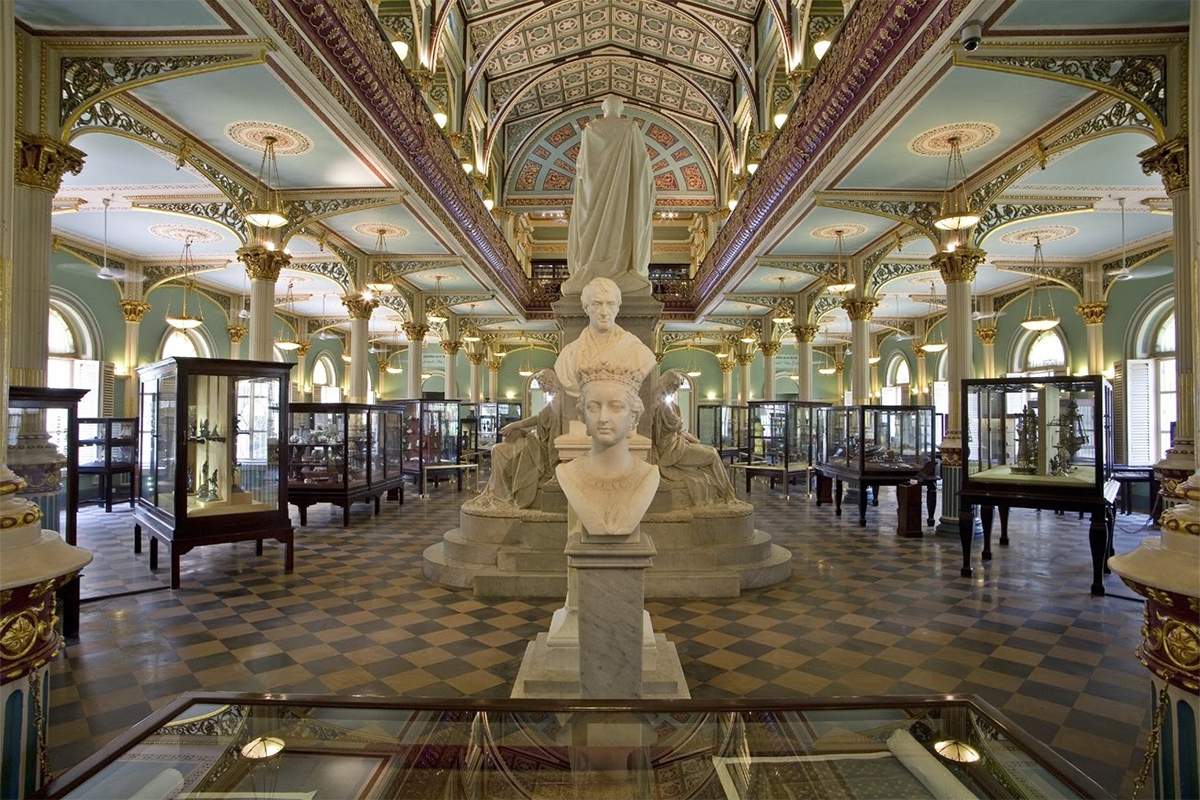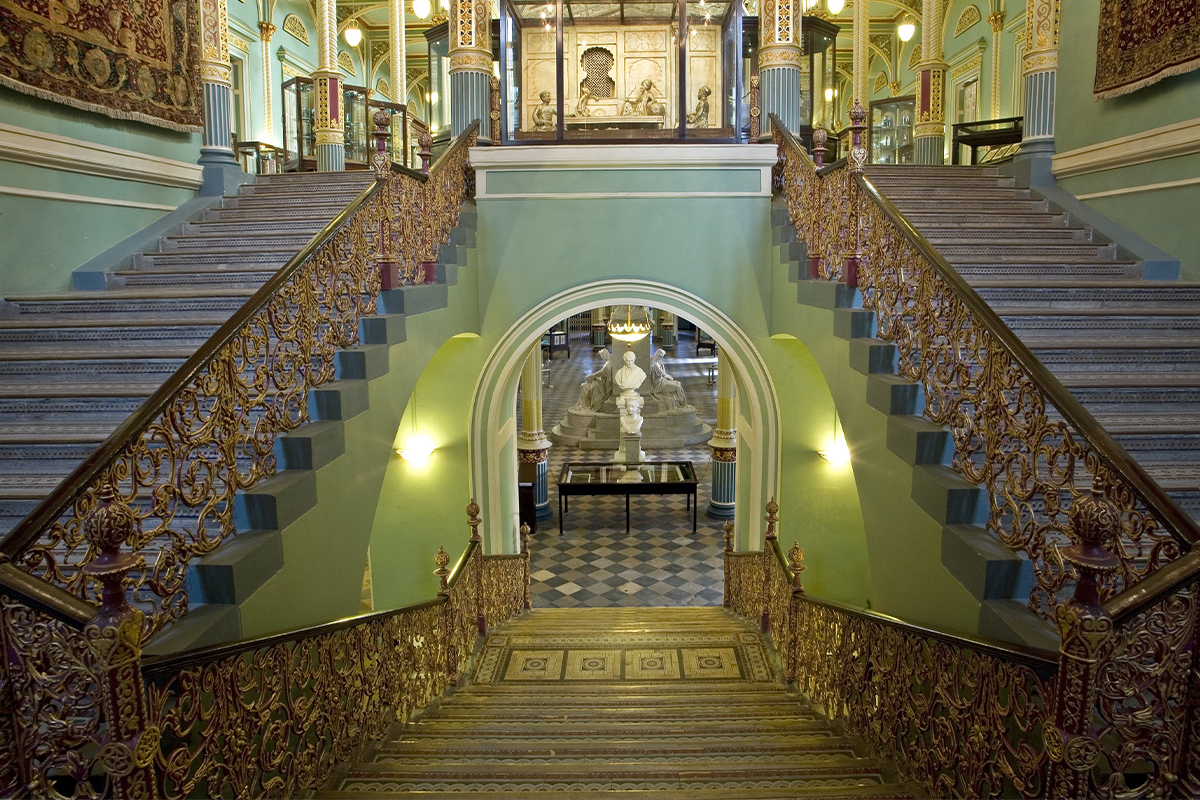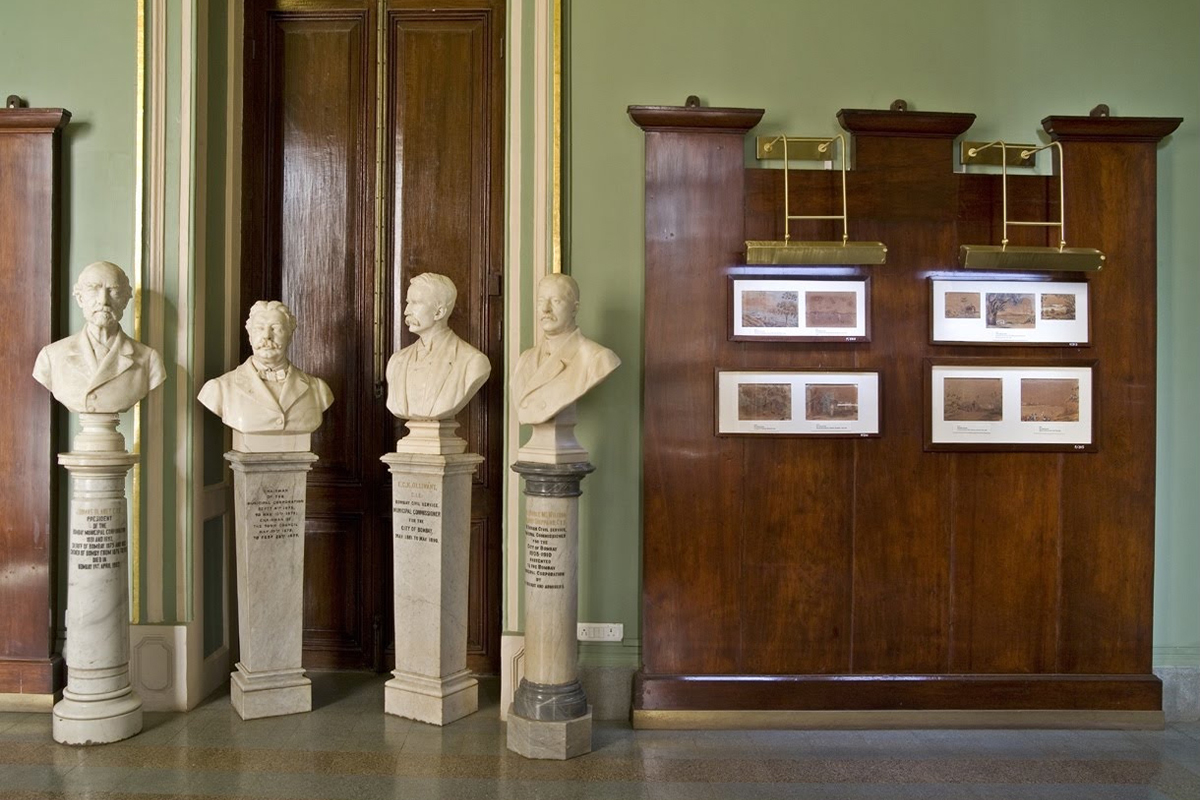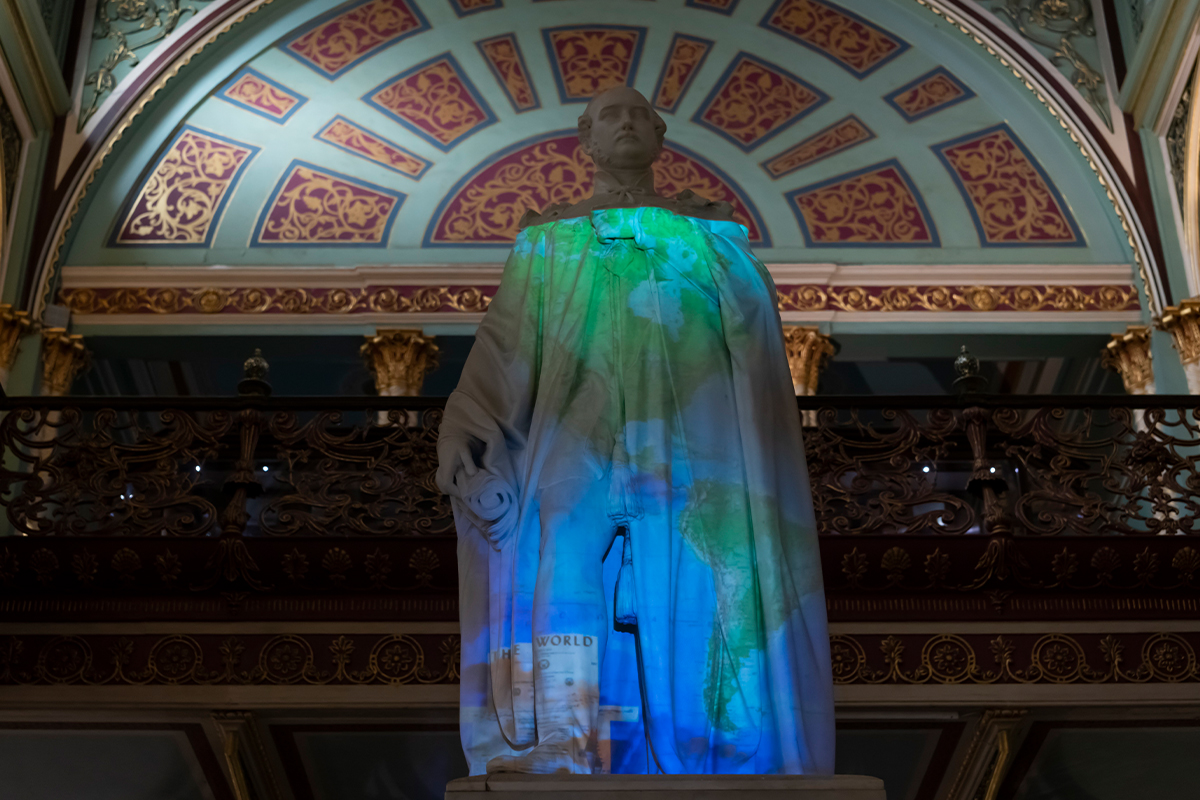ARTICLE
Dr. Bhau Daji Lad Museum
The museum was conceptualised in 1850, when the British Crown began preparing for the first Great Exhibition of the Works of Industry of all Nations to exhibit the industrial arts and crafts of Britain’s colonies with the aim of marketing these products for trade. The products sent to the exhibition from the Bombay Presidency formed the collection of the newly established Central Museum of Bombay in 1855. Officially opening in 1856, the collection was housed in the Mess Room of the Old Town Barracks. However, it was only briefly functional, and much of the collection was damaged during the influx of soldiers into the barracks after the Indian Mutiny (1857–59). The remaining items in the collection were then moved to the Town Hall (now the Asiatic Society). In 1858, after the British Crown officially took over governance of India from the East India Company, a group of citizens came together to plan the construction of a new museum that would be a partial reinvention of the Central Museum of Bombay and would house this collection of artefacts. In 1858, a committee consisting of Jugonnath Sunkarset, George Birdwood, Dr. Bhau Daji Lad and other patrons was formed to spearhead fundraising for the museum and its adjacent gardens. Dr. Bhau Daji Lad raised INR 116,141 (USD 1,578 today) through donations from the public, with an additional contribution of INR 100,000 (USD 1,358 today) from the government.
By 1862, the Public Works Department (PWD) of Mumbai took over construction of the museum after private groups and donors lost interest owing to the dwindling economy. The new Victoria and Albert Museum opened its doors to the public ten years later, in May 1872. Conceived by George Birdwood, the architecture and design of the museum were presented as a Hall of Wonder. The exterior of the building employed a Palladian design while the interiors were characterised by High Victorian design, including a main hall and galleries that featured Minton tiled floors, Corinthian columns, wrought iron palisades, intricate wood carvings, etched glass and gilded furnishings.
The museum committee’s first secretary and curator was Dr. George Buist, who was tasked with developing a collection of items to be displayed at the Museum of Economic Products and the Paris Universal Exhibition in 1855. Copies of these products were later displayed at the museum as part of a movement to develop economic museums that would display the manufacturing of goods to signify the splendour of the Industrial Revolution. In 1903, Cecil L Burns, principal of the Sir JJ School of Art, took charge of the museum and reorganised the collections to draw public interest. Burns felt that a purely scientific museum would not attract visitors and began acquiring three-dimensional models and dioramas that depicted life in Mumbai to add to the permanent collection. The museum also began showcasing new designs, products, paintings and sculptures produced by students at the Sir JJ School of Art, including works by Rao Bahadur, MV Dhurandhar, Baburao Sadwelkar and PA Dhond.
Through the second half of the twentieth century, the museum fell into a state of disrepair owing to lack of upkeep and maintenance. In 2003, a public–private partnership was established between the Municipal Corporation of Greater Mumbai, the Jamnalal Bajaj Foundation and the Indian National Trust for Art and Cultural Heritage (INTACH) to restore the museum, including repairing and remodelling the building and restoring its collection. After five years of work, the building reopened to the public in January 2008. The restoration project was awarded the 2005 UNESCO Asia Pacific Heritage Award of Excellence for Conservation.
Along with exhibiting its collection, the Dr. Bhau Daji Lad Museum is involved in a range of educational and outreach initiatives, including curated workshops, talks, guided tours and programs designed to cater to schools, NGOs and private groups. The museum library holds a collection of rare books on topics such as industrial arts and crafts, the early history of Mumbai and arts and culture dating back to the seventeenth century, which have been restored, catalogued and digitised, as well as more recent publications on modern and contemporary art.
Bibliography
Our website is currently undergoing maintenance and re-design, due to which we have had to take down some of our bibliographies. While these will be re-published shortly, you can request references for specific articles by writing to hellomapacademy@map-india.org.




